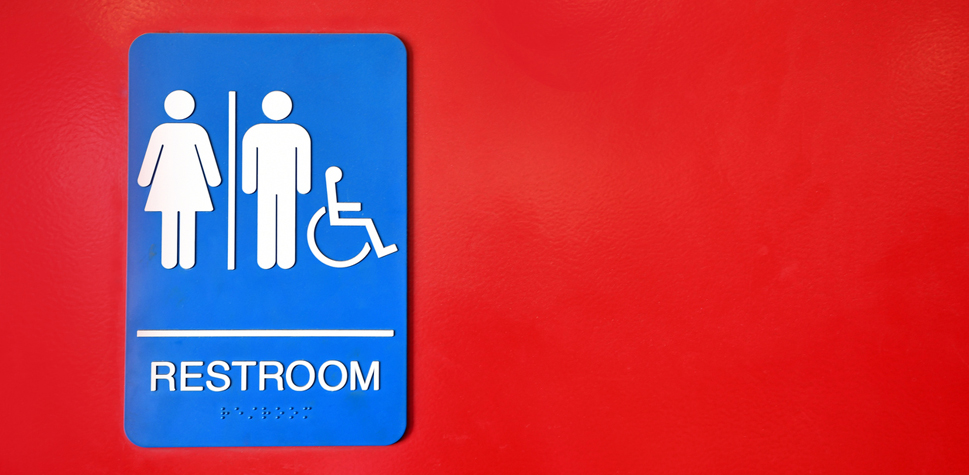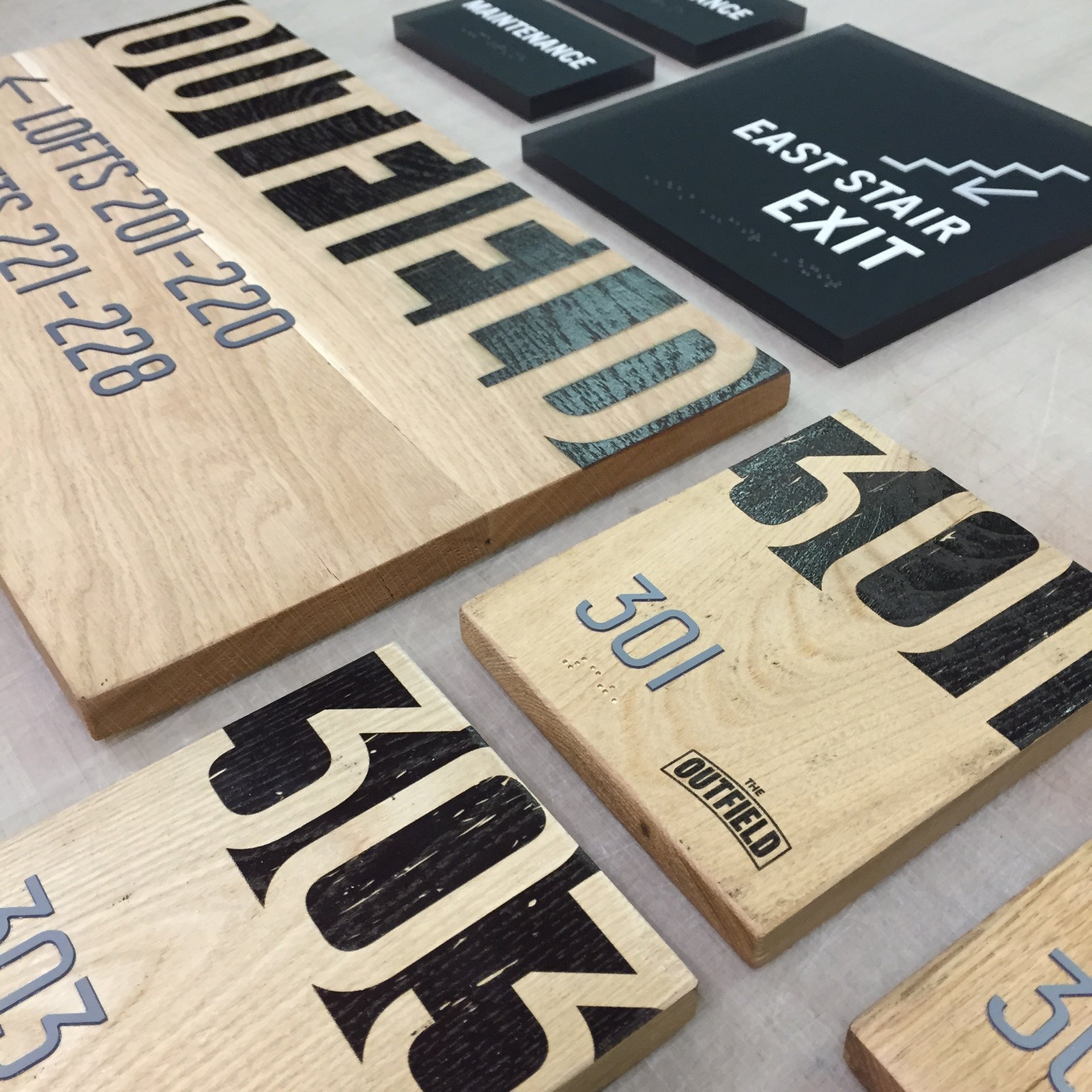Customizing ADA Signs to Meet Your Particular Demands
Wiki Article
Checking Out the Key Attributes of ADA Signs for Enhanced Availability
In the world of accessibility, ADA indicators serve as silent yet powerful allies, making sure that areas are navigable and inclusive for individuals with impairments. By incorporating Braille and responsive aspects, these signs break obstacles for the aesthetically damaged, while high-contrast shade systems and understandable font styles provide to varied visual requirements.Value of ADA Conformity
Making sure compliance with the Americans with Disabilities Act (ADA) is important for promoting inclusivity and equivalent gain access to in public areas and offices. The ADA, passed in 1990, mandates that all public facilities, employers, and transportation solutions suit people with disabilities, ensuring they enjoy the exact same rights and opportunities as others. Conformity with ADA standards not only satisfies lawful responsibilities yet also improves a company's online reputation by demonstrating its commitment to variety and inclusivity.One of the crucial elements of ADA conformity is the execution of accessible signage. ADA indications are made to ensure that individuals with handicaps can easily browse via areas and buildings.
In addition, adhering to ADA laws can minimize the threat of legal repercussions and prospective fines. Organizations that fall short to adhere to ADA standards may deal with lawsuits or charges, which can be both monetarily burdensome and harmful to their public photo. Thus, ADA compliance is important to cultivating an equitable atmosphere for everybody.
Braille and Tactile Elements
The incorporation of Braille and responsive aspects into ADA signage symbolizes the principles of ease of access and inclusivity. These features are essential for people that are aesthetically damaged or blind, allowing them to browse public spaces with greater independence and self-confidence. Braille, a tactile writing system, is vital in providing composed info in a layout that can be quickly perceived through touch. It is generally placed under the corresponding message on signage to ensure that people can access the details without aesthetic help.Responsive components extend beyond Braille and include elevated symbols and personalities. These components are made to be discernible by touch, enabling people to identify room numbers, bathrooms, exits, and other crucial areas. The ADA sets specific standards concerning the size, spacing, and positioning of these tactile aspects to enhance readability and ensure uniformity across different atmospheres.

High-Contrast Color Pattern
High-contrast color design play a crucial role in improving the visibility and readability of ADA signs for people with aesthetic disabilities. These plans are essential as they maximize the difference in light reflectance between text and background, ensuring that indicators are easily noticeable, even from a distance. The Americans with Disabilities Act (ADA) mandates using particular color contrasts to accommodate those with restricted vision, making go now it a crucial facet of conformity.The efficiency of high-contrast colors depends on their ability to stick out in various lights conditions, consisting of dimly lit settings and areas with glow. Usually, dark message on a light history or light message on a dark history is employed to accomplish ideal comparison. As an example, black text on a yellow or white history gives a stark visual distinction that assists in fast recognition and understanding.

Legible Fonts and Text Size
When considering the design of ADA signs, the choice of legible fonts and proper text dimension can not be overemphasized. The Americans with Disabilities Act (ADA) mandates that font styles should be sans-serif and not italic, oblique, manuscript, extremely ornamental, or of uncommon type.The size of the text additionally see post plays a critical role in accessibility. According to ADA guidelines, the minimum message height should be 5/8 inch, and it should enhance proportionally with viewing distance. This is specifically essential in public rooms where signage requirements to be reviewed quickly and precisely. Uniformity in text dimension adds to a cohesive aesthetic experience, assisting people in navigating settings efficiently.
Moreover, spacing between letters and lines is integral to readability. Appropriate spacing avoids personalities from appearing crowded, boosting readability. By adhering to these criteria, designers can considerably enhance access, guaranteeing that signs offers its desired function for all people, no matter their aesthetic capacities.
Reliable Placement Methods
Strategic positioning of ADA signage is vital for taking full advantage of accessibility and making certain compliance with legal requirements. ADA standards state that indications must be placed at a height in between 48 to 60 inches from the ground to ensure they are within the line of sight for both standing and seated people.Furthermore, indications have to be placed surrounding to the lock side of doors to enable very easy identification before entry. Consistency in indication positioning throughout a facility boosts predictability, reducing complication and enhancing total user experience.

Verdict
ADA indicators play a crucial role in advertising accessibility by incorporating attributes that attend to the demands of individuals with disabilities. These aspects collectively foster a comprehensive atmosphere, emphasizing the value of ADA compliance in making certain equal access for all.In the realm of accessibility, ADA signs serve as silent yet powerful allies, making certain that spaces are navigable and inclusive for people with impairments. The ADA, passed in 1990, mandates that all public facilities, employers, and transport services fit individuals with handicaps, guaranteeing they appreciate the exact same civil liberties and opportunities as others. ADA Signs. ADA indications are designed to guarantee that individuals with handicaps can easily navigate via rooms and buildings. ADA guidelines state that indicators need to be placed at an elevation between 48 to 60 inches from the ground to guarantee they are within the line of sight for both standing and seated individuals.ADA indicators play an important duty in advertising ease of access by incorporating attributes that attend to the needs of people with disabilities
Report this wiki page